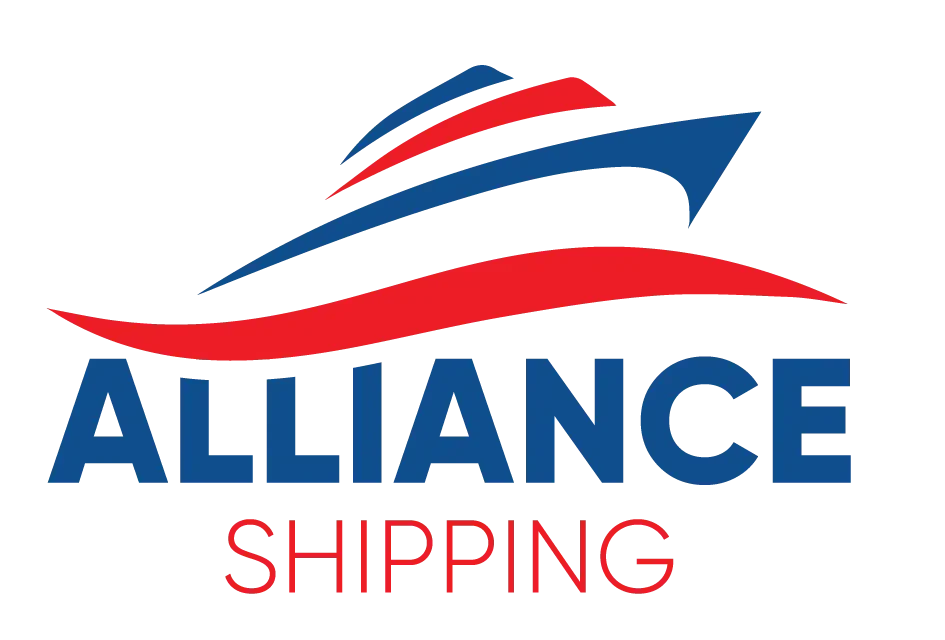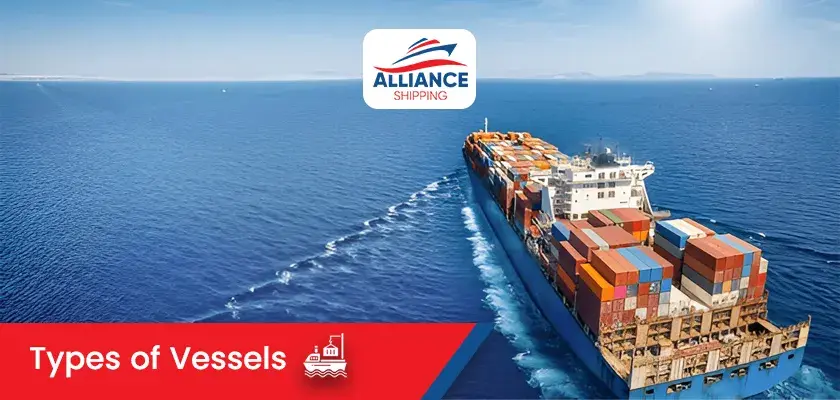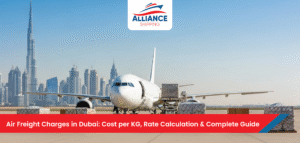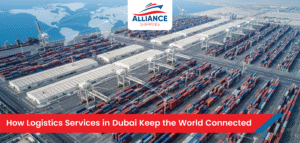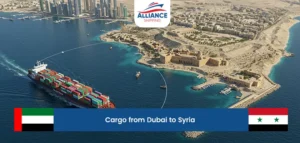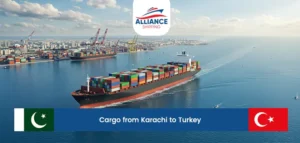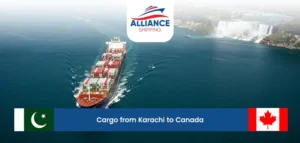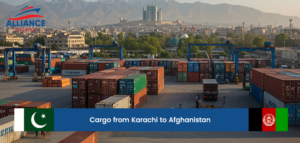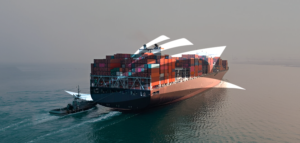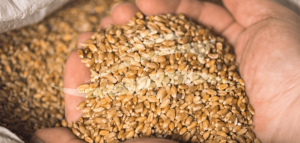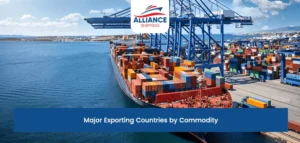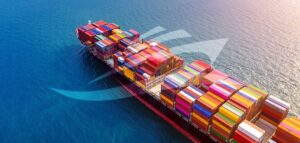Understanding the different types of vessels helps explain how global trade works and why shipping remains the backbone of our modern economy. Each vessel type is specially designed for specific cargo and routes, making international commerce possible.
Every vessel manufactured till today serves a unique purpose in the global supply chain. Some ships keep food fresh during month-long voyages, while others can carry enough iron ore to supply entire steel mills. The shipping industry uses dozens of specialized vessel types, each engineered to handle particular challenges like extreme temperatures, heavy weights, or dangerous chemicals.
This informative blog by Alliance Shipping explores all types of vessels, explaining what they are, how each ship type works, why it was developed, and what makes it essential for today’s interconnected global economy.
Types of Vessels
General Cargo Vessels
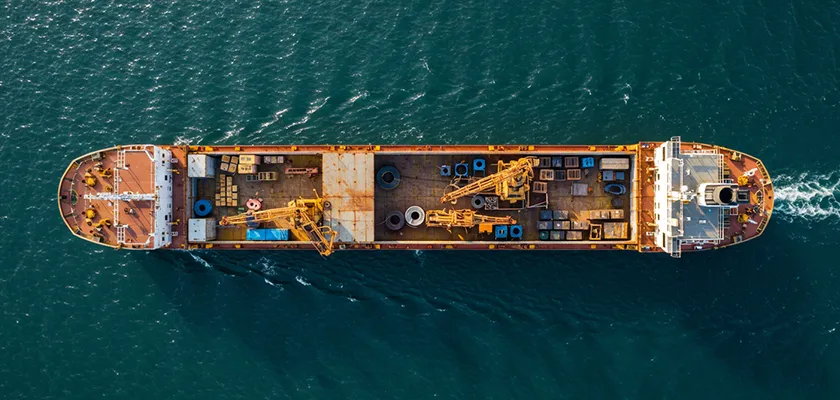
What are “General Cargo” vessels?
General cargo vessels are ships that carry different types of goods packed in boxes, bags, barrels, and other containers. These types of vessels can transport everything from machinery and cars to food and clothing all on the same trip. They have large open spaces called holds where workers can load and unload items using cranes.
General cargo vessels were created to move mixed shipments of goods between ports around the world. Before container ships became popular, these ships were the main way to transport manufactured goods and everyday items across oceans.
What is special about “General Cargo” vessels?
General cargo vessels are flexible and can carry almost any type of cargo that fits in their holds. Unlike other types of vessels that specialize in one kind of goods, these ships can mix different products on the same voyage. They have strong decks and can handle heavy items like trucks, construction equipment, and large machinery.
These vessels also have their own loading equipment like cranes and winches built right into the ship. This means they can work at ports that don’t have fancy loading equipment. The crew can control the loading and unloading process themselves, making these ships very independent.
What is the importance of “General Cargo” vessels today?
General cargo vessels remain important for shipping goods to smaller ports and developing countries where container facilities may not exist. These types of vessels serve routes that larger container ships cannot reach and handle cargo that doesn’t fit standard container sizes.
Use Cases:
- Moving oversized equipment and machinery
- Shipping goods to remote islands and small ports
- Transporting project cargo for construction sites
- Carrying mixed loads of different products
- Serving trade routes with low cargo volumes
Bulk Carriers
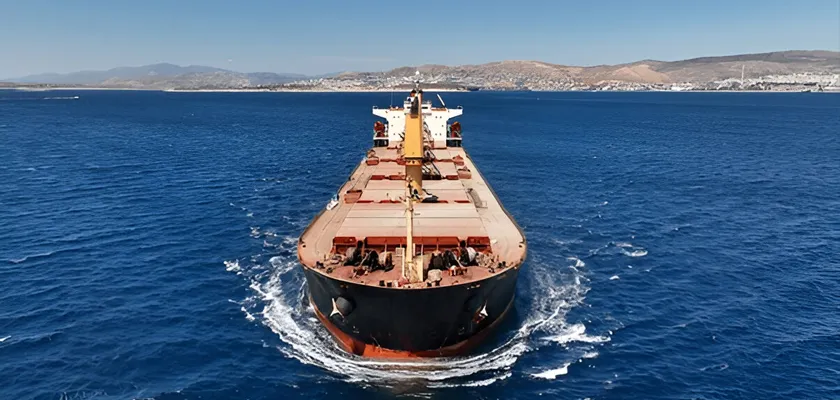
What are “Bulk Carriers” vessels?
Bulk carriers are large ships designed to transport loose materials like grain, coal, iron ore, and salt. These types of vessels have big open spaces called cargo holds with no packaging or containers needed. The materials are poured directly into the ship’s holds and can be unloaded using special equipment at ports.
Bulk carriers were created because moving loose materials in bags or containers was expensive and slow. Shipping companies needed a cheaper way to transport large amounts of raw materials like coal and grain across long distances.
What is special about “Bulk Carriers” vessels?
Bulk carriers can carry enormous amounts of cargo – some can hold over 300,000 tons of materials. These types of vessels have specially designed holds with smooth sides and sloped bottoms that help the cargo flow out easily during unloading. They also have strong steel construction to handle the weight of heavy materials like iron ore.
These ships have unique loading and unloading systems. Some use conveyor belts, others use grab cranes or pneumatic systems that suck out the cargo. Many bulk carriers can load themselves using self-unloading equipment, which saves time and money at ports.
What is the importance of “Bulk Carriers” vessels today?
Bulk carriers are essential for global trade because they move the raw materials that feed industries worldwide. These types of vessels transport the coal that powers electricity plants, the iron ore that makes steel, and the grain that feeds billions of people.
Use Cases:
- Transporting coal for power plants
- Moving iron ore for steel production
- Shipping grain and agricultural products
- Carrying salt for chemical industries
- Transporting wood chips for paper mills
- Moving cement and construction materials
Containerships
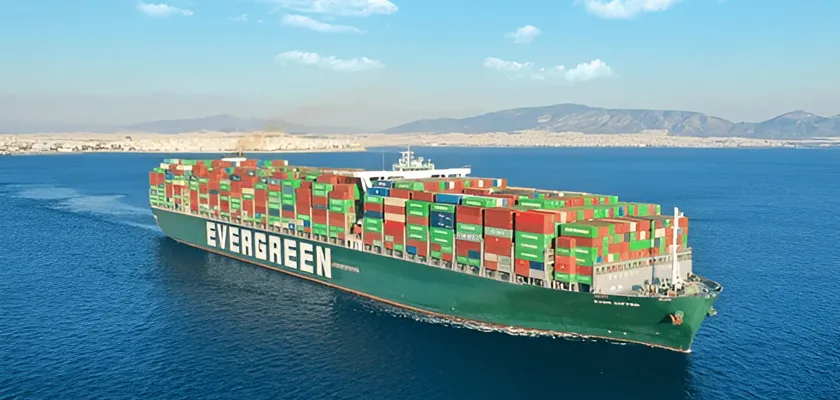
What are “Containerships” vessels?
Containerships are vessels that carry goods packed inside large metal boxes called containers. These types of vessels stack containers on top of each other like building blocks, both above and below deck. All containers are the same size, making loading and unloading fast and efficient using special cranes.
Containerships were created to solve the problem of slow and expensive cargo handling. Before containers, workers had to load and unload thousands of individual packages by hand, which took days and cost a lot of money.
What is special about “Containerships” vessels?
Containerships can carry thousands of containers at once – the largest ones hold over 24,000 containers. These types of vessels use a system of guides and locks that hold containers securely in place during rough weather. They can stack containers up to 22 high on deck and even more in the cargo holds below.
These ships are built for speed and efficiency. They have powerful engines that can maintain high speeds across oceans, and their design allows for very fast loading and unloading at ports. A modern containership can be loaded or unloaded in just 24 hours, compared to weeks for older cargo ships.
What is the importance of “Containerships” vessels today?
Containerships form the backbone of international trade and make global commerce possible. These types of vessels carry about 90% of all manufactured goods traded between countries, from smartphones made in Asia to clothes sold in America and Europe.
Use Cases:
- Shipping manufactured goods between countries
- Moving consumer products to retail stores
- Transporting auto parts for car assembly
- Carrying electronics and technology products
- Moving clothing and textiles
- Shipping food and beverages in refrigerated containers
Product Tankers
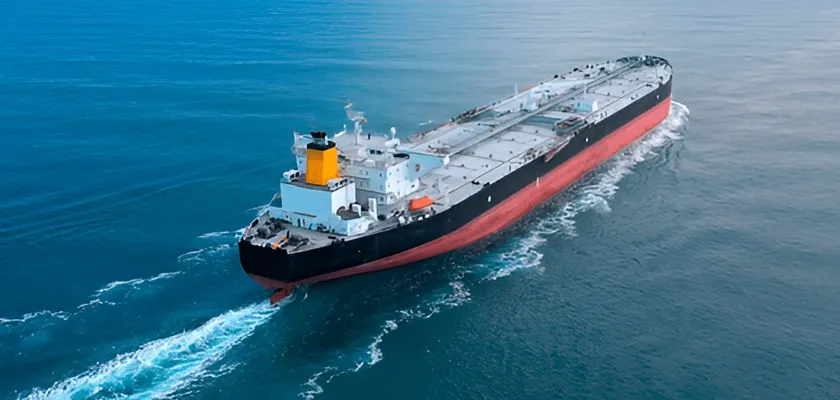
What are “Product Tankers” vessels?
Product tankers are ships that carry liquid products like gasoline, jet fuel, cooking oil, and chemicals. These types of vessels have multiple separate tanks that keep different liquids apart during transport. The tanks are specially coated to prevent contamination and corrosion from the chemicals they carry.
Product tankers were created because liquid products need special handling and cannot mix with each other. Different liquids have different properties and safety requirements, so shipping companies needed vessels designed specifically for these challenges.
What is special about “Product Tankers” vessels?
Product tankers have advanced pumping systems that can load and unload different products at the same time without mixing them. These types of vessels use sophisticated heating and cooling systems to keep products at the right temperature during transport. Some can carry hot asphalt while others transport frozen chemicals.
These ships have multiple layers of safety features including double hulls, gas detection systems, and fire suppression equipment. Each tank can be isolated from the others, and the crew monitors the cargo constantly using computer systems. This makes product tankers some of the safest vessels on the ocean.
What is the importance of “Product Tankers” vessels today?
Product tankers are vital for moving the refined petroleum products that power modern life. These types of vessels ensure that gas stations have fuel, airports have jet fuel, and factories have the chemicals they need to make everything from plastics to medicines.
Use Cases:
- Transporting gasoline to gas stations
- Moving jet fuel to airports
- Shipping heating oil for homes and businesses
- Carrying chemicals for manufacturing
- Transporting cooking oils and food-grade liquids
- Moving lubricants and industrial oils
Crude Carriers
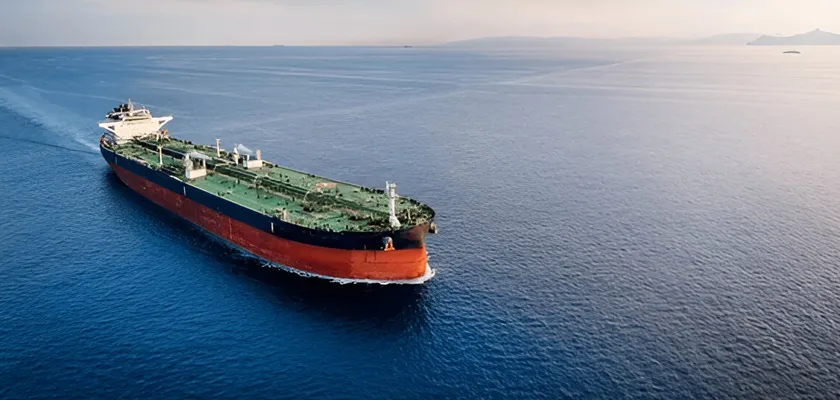
What are “Crude Carriers” vessels?
Crude carriers are massive ships that transport unrefined oil from drilling sites to refineries around the world. These types of vessels are among the largest ships ever built, with some carrying over 2 million barrels of crude oil in their enormous tanks. They pump the thick, black oil directly from offshore platforms or shore terminals into their cargo holds.
Crude carriers were created to meet the world’s growing demand for oil after the discovery of major oil fields in the Middle East and other regions. Countries needed a way to move huge amounts of crude oil across oceans to refineries where it could be turned into gasoline, diesel, and other products.
What is special about “Crude Carriers” vessels?
Crude carriers are built to handle enormous volumes of oil – the largest ones are longer than four football fields and can carry enough oil to fill 125 Olympic-sized swimming pools. These types of vessels have reinforced double hulls that protect against oil spills and can withstand rough ocean conditions. Their tanks are designed with special coatings that prevent the crude oil from contaminating or corroding the ship’s structure.
These ships use powerful heating systems to keep thick crude oil flowing during loading and unloading. Some crude oils become too thick to pump in cold weather, so the ships heat the cargo to keep it liquid. They also have advanced navigation systems and radar because their massive size makes them difficult to steer and stop quickly.
What is the importance of “Crude Carriers” vessels today?
Crude carriers are essential for global energy supply, moving about 60% of all oil traded internationally. These types of vessels connect oil-producing countries with refineries worldwide, ensuring that countries without oil reserves can still meet their energy needs for transportation, heating, and electricity.
Use Cases:
- Transporting crude oil from Middle East to refineries worldwide
- Moving oil from offshore drilling platforms to shore
- Shipping heavy crude oil that requires special heating
- Carrying oil reserves during times of high demand
- Transporting crude oil for strategic petroleum reserves
- Moving oil between different refinery locations
Chemical Tankers
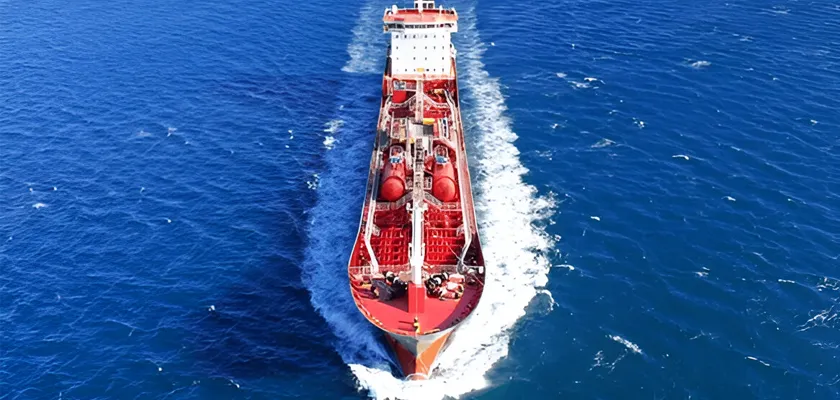
What are “Chemical Tankers” vessels?
Chemical tankers are specialized ships that carry liquid chemicals, acids, fertilizers, and other hazardous materials. These types of vessels have multiple separate tanks made from special materials that resist corrosion from dangerous chemicals. Each tank is completely isolated from the others to prevent different chemicals from mixing and causing dangerous reactions.
Chemical tankers were created because regular cargo ships could not safely transport dangerous chemicals. The shipping industry needed vessels with special safety features, resistant materials, and trained crews to handle substances that could be toxic, flammable, or corrosive.
What is special about “Chemical Tankers” vessels?
Chemical tankers have the most advanced safety systems of any types of vessels. They use special stainless steel or coated tanks that can resist even the most corrosive acids and chemicals. Each tank has its own pumping system, heating coils, and monitoring equipment to ensure chemicals stay at the right temperature and pressure during transport.
These ships have multiple backup safety systems including emergency shutdown procedures, gas detection alarms, and specialized firefighting equipment. The crew members receive extensive training on handling hazardous materials and wear protective equipment when working with the cargo. Many chemical tankers can carry 30 or more different chemicals at the same time without any risk of contamination.
What is the importance of “Chemical Tankers” vessels today?
Chemical tankers enable modern manufacturing by transporting the raw materials needed to make plastics, medicines, fertilizers, and thousands of other products. These types of vessels are crucial for global supply chains, especially for countries that import chemicals for their manufacturing industries.
Use Cases:
- Shipping acids for metal processing industries
- Transporting liquid fertilizers for agriculture
- Moving chemicals for plastic and rubber production
- Carrying pharmaceutical ingredients
- Shipping cleaning chemicals and solvents
- Transporting food-grade chemicals and additives
Gas Carriers
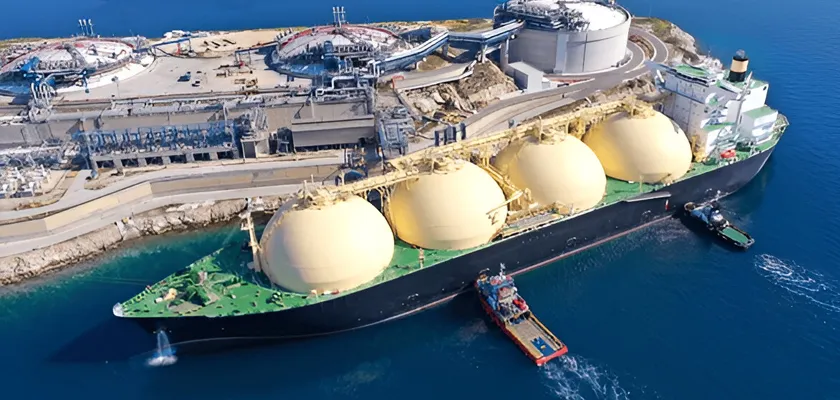
What are “Gas Carriers” vessels?
Gas carriers are highly specialized ships that transport natural gas, propane, butane, and other gases in liquid form. These types of vessels keep gases at extremely cold temperatures or under high pressure to turn them into liquids, which takes up much less space than gas form. They have spherical or cylindrical tanks that look like giant thermos bottles to maintain the required conditions.
Gas carriers were created to transport natural gas from producing countries to markets around the world. Since gas cannot be easily transported through pipelines across oceans, shipping companies developed these special vessels to carry liquefied gas safely over long distances.
What is special about “Gas Carriers” vessels?
Gas carriers use incredible engineering to keep gases liquid during transport. These types of vessels maintain temperatures as low as -260°F (-162°C) for liquefied natural gas, which is colder than the surface of Mars. Their insulated tanks prevent the liquid from warming up and turning back into gas, which would create dangerous pressure buildup.
These ships have sophisticated safety and monitoring systems that constantly check temperature, pressure, and gas levels throughout the voyage. If any gas escapes, detection systems immediately alert the crew and activate safety procedures. The crew receives specialized training to handle emergencies, and the ships carry equipment to safely vent gas if necessary.
What is the importance about “Gas Carriers” vessels today?
Gas carriers are becoming increasingly important as countries switch to cleaner-burning natural gas for electricity generation and heating. These types of vessels enable the global trade in liquefied natural gas, allowing countries without gas reserves to access this cleaner energy source and reduce their carbon emissions.
Use Cases:
- Transporting liquefied natural gas for power plants
- Moving propane for home heating and cooking
- Shipping butane for industrial processes
- Carrying ammonia for fertilizer production
- Transporting ethylene for plastic manufacturing
- Moving compressed natural gas to remote locations
Asphalt Carriers
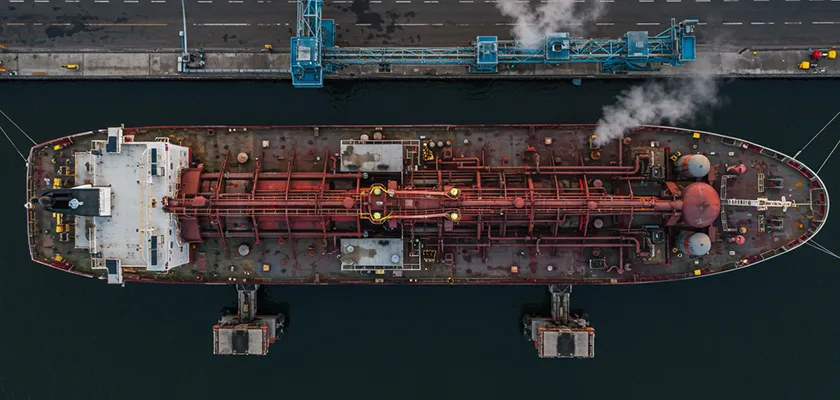
What are “Asphalt Carriers” vessels?
Asphalt carriers are specialized ships that transport hot liquid asphalt used for paving roads and construction projects. These types of vessels keep asphalt at temperatures between 300-350°F (150-175°C) during transport because asphalt becomes solid and unmovable when it cools down. They have heavily insulated tanks and powerful heating systems to maintain the high temperatures needed.
Asphalt carriers were created because asphalt is difficult to transport over long distances. Regular ships cannot handle the high temperatures required, and if asphalt cools and hardens during transport, it becomes impossible to unload and unusable for construction projects.
What is special about “Asphalt Carriers” vessels?
Asphalt carriers have industrial-strength heating systems that can maintain extremely high temperatures for weeks at sea. These types of vessels use thermal oil circulation systems or steam heating to keep every part of their cargo tanks hot enough to keep asphalt flowing like thick honey. Their tanks are lined with special heat-resistant materials and surrounded by thick insulation.
These ships have sophisticated temperature monitoring systems that track heat levels in different parts of each tank throughout the voyage. If the temperature drops too low, automatic heating systems activate to prevent the asphalt from hardening. The unloading process requires heated pipelines and special pumps designed to handle hot, thick liquids safely.
What is the importance of “Asphalt Carriers” vessels today?
Asphalt carriers support global infrastructure development by transporting the materials needed for road construction, airport runways, and building projects. These types of vessels are especially important for island nations and remote areas that cannot produce asphalt locally but need it for development projects.
Use Cases:
- Transporting asphalt for highway construction projects
- Moving hot asphalt to island nations for road building
- Shipping asphalt for airport runway construction
- Carrying asphalt for roofing and waterproofing materials
- Transporting specialty asphalts for industrial applications
- Moving asphalt to remote construction sites without refineries
Heavy-lift Specialized Vessels
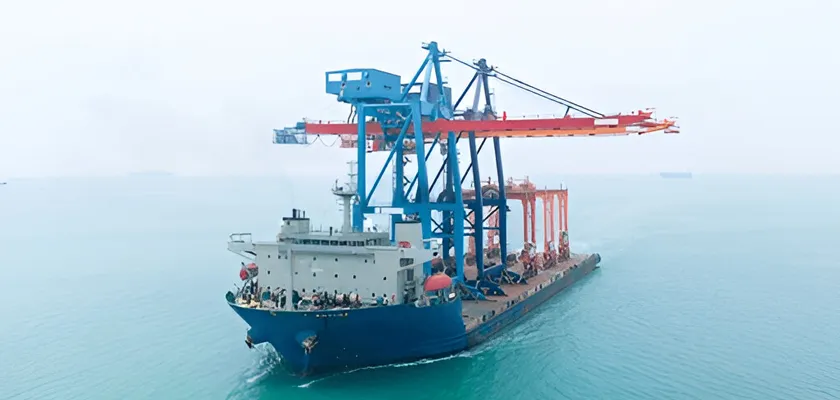
What are “Heavy-lift Specialized” vessels?
Heavy-lift specialized vessels are ships designed to carry extremely heavy and oversized cargo that regular ships cannot handle. These types of vessels have powerful cranes that can lift items weighing hundreds or thousands of tons, such as factory equipment, power plant parts, and entire ship sections. They have reinforced decks and special loading equipment to handle cargo that would break normal ships.
Heavy-lift specialized vessels were created because industries needed to transport massive equipment and structures that were too big or heavy for standard cargo ships. As factories, power plants, and construction projects became larger, shipping companies developed these specialized vessels to move oversized industrial equipment across oceans.
What is special about “Heavy-lift Specialized” vessels?
Heavy-lift specialized vessels have enormous cranes that can lift weights equivalent to 50 cars at once. These types of vessels use advanced engineering with reinforced steel decks that can support concentrated loads without bending or breaking. Some have moveable decks that can be adjusted to accommodate different cargo shapes and sizes.
These ships can handle cargo that seems impossible to move, including entire bridge sections, oil rig components, and locomotives. They have specialized loading equipment like hydraulic trailers and computerized lifting systems that can precisely position heavy items. Many heavy-lift vessels can also submerge part of their deck underwater to float large structures directly onto the ship.
What is the importance of “Heavy-lift Specialized” vessels today?
Heavy-lift specialized vessels enable major infrastructure projects around the world by transporting equipment that cannot be manufactured locally. These types of vessels are essential for building power plants, oil rigs, and large industrial facilities in remote locations where heavy equipment is not available.
Use Cases:
- Transporting power plant turbines and generators
- Moving oil rig platforms and drilling equipment
- Shipping bridge sections and construction modules
- Carrying locomotives and heavy machinery
- Transporting mining equipment to remote sites
- Moving wind turbine components for renewable energy projects
Wood Chip Specialized Vessels
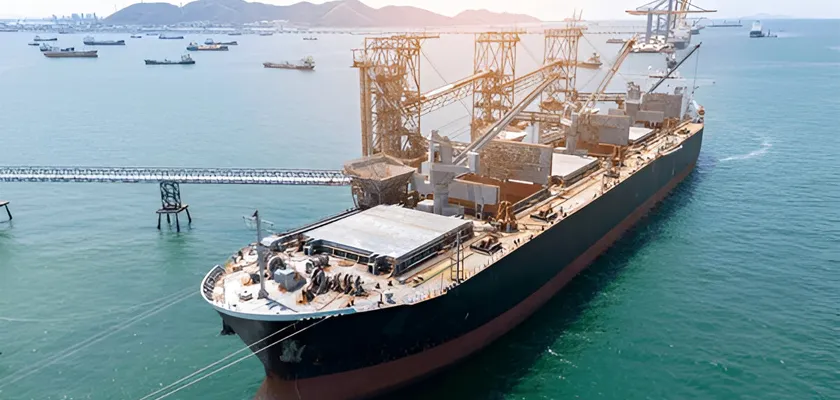
What are “Wood Chip Specialized” vessels?
Wood chip specialized vessels are ships designed specifically to carry wood chips, sawdust, and wood pellets used for paper production and biomass energy. These types of vessels have large open holds with special ventilation systems to prevent the wood chips from rotting or catching fire during transport. The holds are designed to keep wood materials dry and properly aired.
Wood chip specialized vessels were created because wood materials require special handling during ocean transport. Regular bulk carriers could not properly ventilate wood cargo, leading to dangerous situations where wood chips would heat up, produce toxic gases, or even spontaneously combust from lack of proper air circulation.
What is special about “Wood Chip Specialized” vessels?
Wood chip specialized vessels have sophisticated air circulation systems that constantly move fresh air through the cargo holds to prevent dangerous gas buildup. These types of vessels monitor temperature and humidity levels throughout the voyage because wet or overheated wood chips can create methane gas or catch fire without warning.
These ships have specially shaped holds with sloped sides that help wood chips flow out easily during unloading. They use powerful ventilation fans and computerized monitoring systems that alert the crew if conditions become dangerous. The holds are also designed to prevent wood dust from accumulating in corners where it could create fire hazards.
What is the importance of “Wood Chip Specialized” vessels today?
Wood chip specialized vessels support the global paper industry and renewable energy sector by transporting biomass materials from forests to processing facilities. These types of vessels are increasingly important as countries seek renewable energy sources and sustainable alternatives to fossil fuels.
Use Cases:
- Shipping wood chips to paper mills for pulp production
- Transporting biomass pellets for power plant fuel
- Moving sawdust for particleboard manufacturing
- Carrying wood waste for biomass energy plants
- Shipping compressed wood pellets for home heating
- Transporting wood fiber for construction materials
Livestock Specialized Vessels
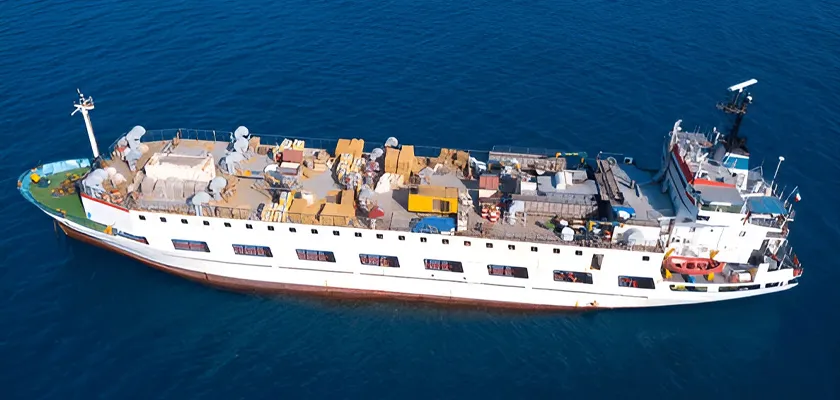
What are “Livestock Specialized” vessels?
Livestock specialized vessels are ships designed to transport live animals such as cattle, sheep, goats, and horses across oceans. These types of vessels have multiple decks with pens, feeding systems, fresh water supplies, and ventilation to keep animals healthy during long voyages. They carry veterinarians and animal handlers to care for thousands of animals at sea.
Livestock specialized vessels were created to meet global demand for live animals in countries that could not produce enough meat locally. Many Middle Eastern and Asian countries import live cattle and sheep for fresh meat, religious requirements, and breeding programs that require animals to be alive upon arrival.
What is special about “Livestock Specialized” vessels?
Livestock specialized vessels are essentially floating farms with sophisticated life support systems for animals. These types of vessels have automated feeding and watering systems that can care for up to 20,000 animals during voyages lasting several weeks. They maintain precise temperature and humidity control to keep animals comfortable in different climate zones.
These ships have hospital facilities with veterinary equipment and isolation pens for sick animals. They use specialized flooring that provides good grip for animals and drainage systems that keep pens clean and sanitary. The vessels also have backup power systems and emergency equipment to ensure animal welfare is maintained even if mechanical problems occur.
What is the importance of “Livestock Specialized” vessels today?
Livestock specialized vessels support global food security by enabling countries with limited agricultural land to access live animals for meat production and breeding. These types of vessels are crucial for maintaining genetic diversity in livestock and providing fresh meat to regions where local production cannot meet demand.
Use Cases:
- Exporting breeding cattle to improve local herds
- Shipping live sheep for meat production in Middle East
- Transporting dairy cattle to establish milk production
- Moving horses for racing and breeding programs
- Shipping goats for meat and dairy production
- Carrying live animals for religious and cultural requirements
Refrigerated Specialized Vessels
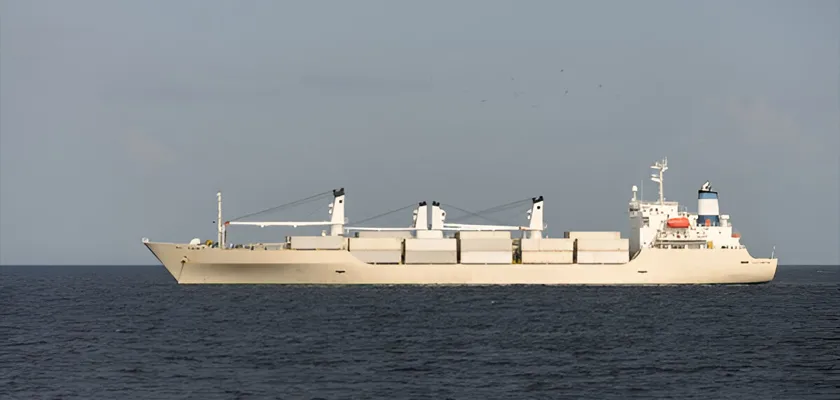
What are “Refrigerated Specialized” vessels?
Refrigerated specialized vessels are ships equipped with powerful cooling systems to transport frozen and fresh foods across oceans. These types of vessels maintain precise temperatures from -30°F to 60°F (-34°C to 15°C) depending on the cargo, keeping everything from frozen fish to fresh bananas in perfect condition during long voyages.
Refrigerated specialized vessels were created to enable global food trade by allowing countries to export perishable foods to distant markets. Before these ships, most fresh and frozen foods could only be sold locally because they would spoil during long ocean transport.
What is special about “Refrigerated Specialized” vessels?
Refrigerated specialized vessels have multiple temperature zones that can maintain different conditions for various foods simultaneously. These types of vessels can carry frozen meat at -20°F (-29°C) in one hold, while keeping fresh fruit at 35°F (2°C) in another hold. Their refrigeration systems are more powerful than those in entire grocery stores.
These ships have backup refrigeration systems and emergency power generators because any cooling failure would destroy millions of dollars worth of food cargo. They use sophisticated monitoring systems that track temperature, humidity, and air quality in each cargo hold throughout the voyage. Many also have controlled atmosphere systems that adjust oxygen and carbon dioxide levels to extend the shelf life of fresh produce.
What is the importance of “Refrigerated Specialized” vessels today?
Refrigerated specialized vessels enable global food distribution, allowing people worldwide to enjoy fresh and frozen foods from different continents year-round. These types of vessels are essential for food security, especially for countries that cannot produce certain foods due to climate or seasonal limitations.
Use Cases:
- Shipping frozen seafood from fishing fleets to markets
- Transporting fresh fruits and vegetables between continents
- Moving frozen meat products for global distribution
- Carrying dairy products like cheese and butter
- Shipping fresh flowers for international markets
- Transporting frozen processed foods and ice cream
Ro/Ro Specialized Vessels
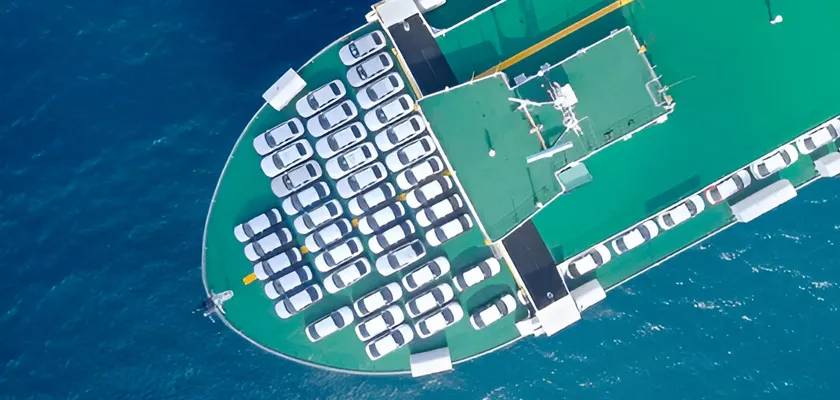
What are “Ro/Ro Specialized” vessels?
Ro/Ro specialized vessels are ships where vehicles and cargo drive on and off using ramps instead of being lifted by cranes. These types of vessels work like floating parking garages with multiple decks connected by ramps, allowing cars, trucks, trailers, and even trains to roll directly onto the ship. The name “Ro/Ro” stands for “Roll-on/Roll-off” because of how cargo moves on and off the vessel.
Ro/Ro specialized vessels were created to speed up loading and unloading of wheeled cargo and reduce handling costs. Before these ships, cars and trucks had to be lifted individually by cranes, which was slow, expensive, and could damage vehicles during the lifting process.
What is special about “Ro/Ro Specialized” vessels?
Ro/Ro specialized vessels can load and unload hundreds of vehicles in just a few hours compared to days required by traditional cargo ships. These types of vessels have adjustable ramps and moveable decks that can accommodate everything from motorcycles to massive construction equipment. Some have up to 13 different vehicle decks connected by a network of ramps.
These ships have sophisticated ventilation systems that remove dangerous exhaust fumes when vehicles drive on and off with their engines running. They also have advanced fire suppression systems because vehicle decks pose higher fire risks than regular cargo holds. Many Ro/Ro vessels can carry passengers in addition to vehicles, making them popular for ferry services.
What is the importance of “Ro/Ro Specialized” vessels today?
Ro/Ro specialized vessels are essential for international car trade and enable efficient transportation of vehicles and wheeled equipment worldwide. These types of vessels support global supply chains by quickly moving everything from new cars to food delivery trucks between countries and continents.
Use Cases:
- Shipping new cars from factories to dealerships worldwide
- Transporting trucks and commercial vehicles
- Moving construction equipment and machinery
- Carrying trailers and shipping containers on wheels
- Providing ferry services for passengers with cars
- Shipping military vehicles and equipment
Coaster Vessels
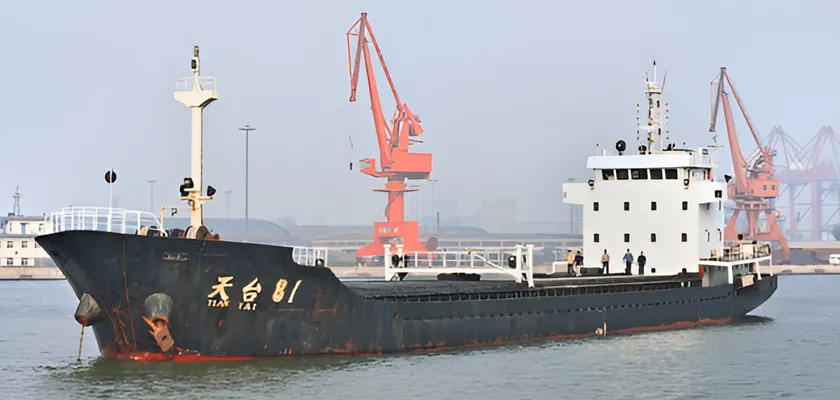
What are “Coaster” vessels?
Coaster vessels are small cargo ships that operate along coastlines and make short trips between nearby ports. These types of vessels typically carry between 500 to 3,000 tons of cargo and can enter small harbors where larger ships cannot go. They serve as the local delivery trucks of the shipping world, connecting small ports to major shipping routes.
Coaster vessels were created to serve small coastal communities and ports that were too shallow or narrow for large ocean-going ships. Island nations and coastal regions needed smaller vessels that could navigate in shallow waters and tight spaces while still carrying enough cargo to be economically viable.
What is special about “Coaster” vessels?
Coaster vessels are designed for flexibility and can handle many different types of cargo on the same voyage. These types of vessels have shallow drafts that allow them to enter ports that larger ships cannot reach, including river mouths and small island harbors. They often have their own cranes and loading equipment, making them independent of port facilities.
These ships can quickly adapt to changing cargo demands and routes because of their smaller size and simpler operations. They provide essential connections between remote areas and major shipping hubs, often serving as the only reliable transportation link for isolated coastal communities. Many coaster vessels are family-owned businesses that have served the same routes for generations.
What is the importance of “Coaster” vessels today?
Coaster vessels provide vital transportation services to small ports and remote coastal areas that larger ships cannot serve. These types of vessels ensure that isolated communities have access to essential goods and can export their local products to larger markets.
Use Cases:
- Delivering supplies to small island communities
- Transporting goods along rivers and coastal areas
- Serving ports too small for large container ships
- Moving regional cargo between nearby countries
- Providing backup transportation when larger ships cannot operate
- Supporting local fishing and agricultural industries
Handysize Vessels
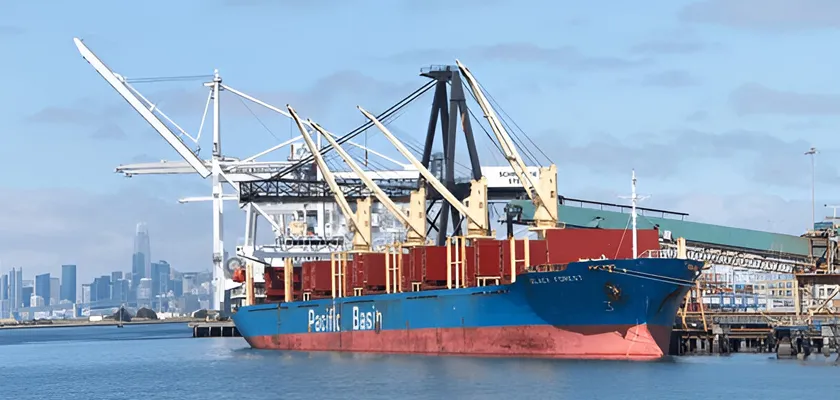
What are “Handysize” vessels?
Handysize vessels are medium-sized bulk carriers that typically carry between 15,000 to 35,000 tons of dry cargo like grain, coal, or iron ore. These types of vessels are considered the workhorses of the shipping industry because they are large enough to be efficient but small enough to enter most ports around the world. They get their name from being “handy” or versatile for many different routes and cargoes.
Handysize vessels were created to fill the gap between small coastal ships and massive bulk carriers. Many ports could not accommodate very large ships, so shipping companies needed medium-sized vessels that could carry substantial cargo loads while still accessing smaller ports worldwide.
What is special about “Handysize” vessels?
Handysize vessels offer the perfect balance of cargo capacity and port accessibility. These types of vessels can enter over 600 ports worldwide, compared to larger ships that are limited to major deep-water facilities. They have their own cargo handling equipment including cranes and conveyor systems, allowing them to work at ports without specialized loading facilities.
These ships are extremely flexible and can switch between different types of dry cargo depending on market demand. They can carry grain from North America, coal from Australia, and fertilizer from the Middle East all in the same year. Their moderate size also makes them more fuel-efficient per ton of cargo than smaller vessels.
What is the importance of “Handysize” vessels today?
Handysize vessels are crucial for global trade because they can reach ports that larger ships cannot access while still carrying substantial cargo loads. These types of vessels ensure that smaller countries and ports remain connected to international trade networks and can import essential materials.
Use Cases:
- Transporting grain to countries with small ports
- Moving coal and iron ore to mid-sized steel mills
- Carrying fertilizer to agricultural regions
- Shipping salt and other industrial minerals
- Transporting wood pellets for energy production
- Moving cement and construction materials
Handymax Vessels
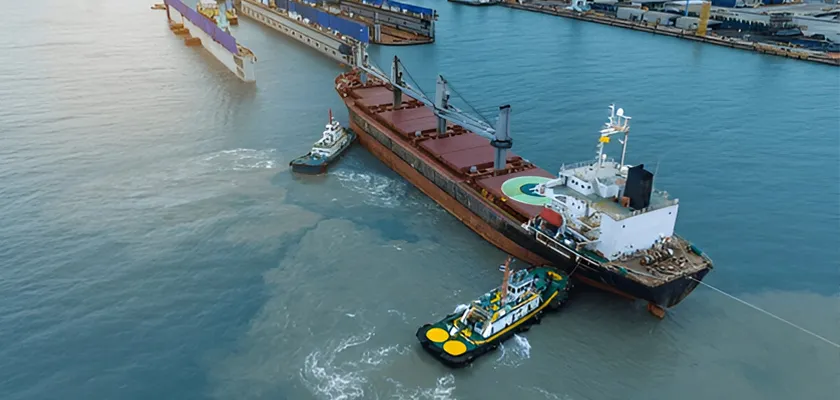
What are “Handymax” vessels?
Handymax vessels are bulk carriers that carry between 35,000 to 60,000 tons of dry cargo, making them larger than Handysize ships but smaller than major bulk carriers. These types of vessels represent the largest ships that can still access most ports worldwide while carrying significant cargo loads. They are popular because they offer good cargo capacity without the port restrictions of bigger vessels.
Handymax vessels were created as shipping companies wanted larger cargo capacity than Handysize ships could provide while maintaining the ability to serve diverse ports. They needed vessels that could carry more cargo per voyage to reduce transportation costs while still accessing the majority of world ports.
What is special about “Handymax” vessels?
Handymax vessels provide optimal cargo capacity while maintaining access to about 450 ports worldwide. These types of vessels are large enough to achieve good economies of scale but small enough to avoid the draft and size restrictions that limit where bigger ships can go. They typically have more sophisticated cargo handling equipment than smaller vessels.
These ships often feature advanced fuel-efficient engines and hull designs that reduce operating costs per ton of cargo carried. They can handle a wide variety of bulk cargoes and are particularly popular for routes where cargo volumes are too large for Handysize vessels but not large enough to justify using massive bulk carriers.
What is the importance of “Handymax” vessels today?
Handymax vessels serve as the backbone of medium-volume bulk trades, providing efficient transportation for cargo routes that require more capacity than smaller ships can offer. These types of vessels are essential for maintaining cost-effective shipping services to ports that cannot accommodate the largest bulk carriers.
Use Cases:
- Carrying large grain shipments to medium-sized countries
- Transporting iron ore to regional steel producers
- Moving coal for medium-capacity power plants
- Shipping bauxite for aluminum production
- Carrying woodchips to paper mills
- Transporting specialty minerals and industrial materials
Supramax Vessels
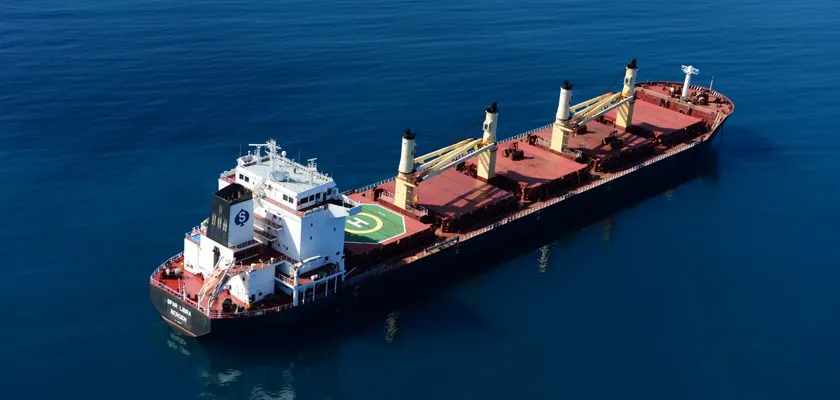
What are “Supramax” vessels?
Supramax vessels are bulk carriers that carry between 50,000 to 60,000 tons of dry cargo like grain, coal, and iron ore. These types of vessels are larger than Handymax ships but still small enough to enter most major ports around the world. They have powerful onboard cranes that can load and unload cargo without depending on port equipment, making them very independent.
Supramax vessels were created because shipping companies needed larger cargo capacity than Handymax ships could provide while maintaining flexibility to serve many different ports. The shipping industry wanted vessels that could carry more cargo per trip to reduce costs but still access ports that were too small for massive bulk carriers.
What is special about “Supramax” vessels?
Supramax vessels have four large cargo cranes that can each lift 30 tons, allowing them to handle their own loading and unloading at ports without specialized equipment. These types of vessels can access about 400 ports worldwide, giving them excellent flexibility for different trade routes. Their cranes can also be used to handle packaged cargo, not just bulk materials.
These ships have optimized hull designs that provide good fuel efficiency while carrying substantial cargo loads. They feature modern engine technology and can maintain decent speeds even when fully loaded. Many Supramax vessels have strengthened holds that can carry heavy cargoes like iron ore as well as lighter materials like grain in the same voyage.
What is the importance of “Supramax” vessels today?
Supramax vessels serve key trade routes where cargo volumes are too large for smaller ships but ports cannot accommodate massive bulk carriers. These types of vessels provide essential flexibility in global shipping by maintaining access to mid-sized ports while offering good cargo capacity and self-sufficiency.
Use Cases:
- Transporting iron ore to regional steel mills
- Carrying grain to countries with medium-sized ports
- Moving coal for power plants and industrial facilities
- Shipping agricultural products like soybeans and wheat
- Transporting minor bulk commodities and packaged goods
- Serving trade routes between developing countries
Ultramax Vessels
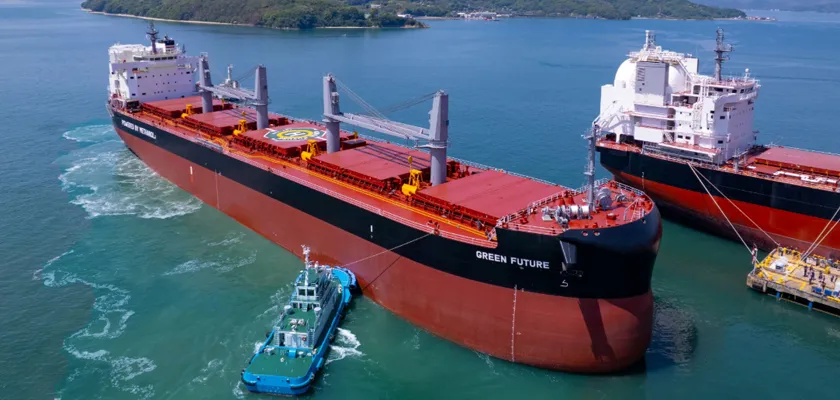
What are “Ultramax” vessels?
Ultramax vessels are the largest bulk carriers that can still fit through the Panama Canal, typically carrying between 60,000 to 65,000 tons of cargo. These types of vessels represent the maximum size that can use this important shipping route while maintaining access to a wide range of ports worldwide. They have advanced fuel-efficient engines and modern cargo handling equipment.
Ultramax vessels were created to maximize cargo capacity while preserving the ability to transit the Panama Canal and serve diverse global ports. Shipping companies wanted the largest possible ships that could still access most major trade routes without the restrictions that affect much larger bulk carriers.
What is special about “Ultramax” vessels?
Ultramax vessels offer the best combination of cargo capacity and global port access among larger bulk carriers. These types of vessels can use the Panama Canal, which cuts thousands of miles off certain trade routes and provides access to both Atlantic and Pacific markets from the same voyage. They have four powerful cranes that provide complete cargo handling independence.
These ships feature the latest fuel-efficient technologies including optimized hull shapes, advanced engine systems, and computer-controlled operations that reduce fuel consumption per ton of cargo. They can carry diverse cargoes and switch between different trades as market conditions change, providing excellent commercial flexibility for their operators.
What is the importance of “Ultramax” vessels today?
Ultramax vessels provide maximum cargo efficiency for trade routes that require Panama Canal transit or access to ports that cannot handle larger ships. These types of vessels are essential for maintaining cost-effective shipping services on routes where very large carriers cannot operate due to size restrictions.
Use Cases:
- Carrying coal through Panama Canal between Pacific and Atlantic
- Transporting grain from North America to Asia via canal route
- Moving iron ore to steel mills with draft restrictions
- Shipping agricultural products on transpacific routes
- Carrying minor bulks and specialty cargoes globally
- Serving ports with size limitations but substantial cargo volumes
Panamax Vessels
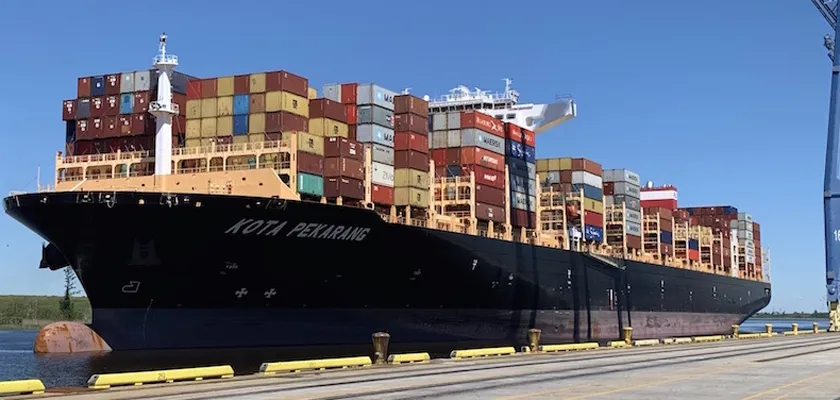
What are “Panamax” vessels?
Panamax vessels are ships designed to fit exactly through the original Panama Canal locks, typically carrying between 65,000 to 80,000 tons of cargo. These types of vessels have specific maximum dimensions of 965 feet long, 106 feet wide, and 39.5 feet deep to squeeze through the canal with just inches to spare. The name “Panamax” literally means “Panama maximum” size.
Panamax vessels were created specifically to take advantage of the Panama Canal while maximizing cargo capacity within the canal’s size restrictions. When the canal opened in 1914, it became the most important shipping route in the world, so ships were designed to use it efficiently while carrying the largest possible cargo loads.
What is special about “Panamax” vessels?
Panamax vessels are engineering marvels that maximize every inch of space allowed by the Panama Canal dimensions. These types of vessels can barely fit through the canal locks with only two feet of clearance on each side and must be guided by special tugboats and pilots. They represent the perfect balance between cargo capacity and canal accessibility.
These ships have specialized designs that optimize cargo space within the strict dimensional limits imposed by the canal. They typically have five cargo holds and may or may not have their own cranes, depending on their intended trade routes. Many Panamax vessels are specifically designed for particular trades like carrying grain from the US Gulf to Asia.
What is the importance of “Panamax” vessels today?
Panamax vessels remain important for trades that benefit from Panama Canal transit, even though newer larger ships use the expanded canal locks. These types of vessels provide cost-effective transportation on routes where the time and fuel savings from using the canal outweigh the benefits of larger cargo capacity.
Use Cases:
- Shipping grain from US Gulf ports to Asian markets
- Transporting coal from Colombia to global markets
- Carrying iron ore on intercontinental routes via canal
- Moving containers between Atlantic and Pacific trades
- Shipping bulk cargoes between East and West coasts
- Serving specialized trades requiring canal transit
Kamsarmax Vessels
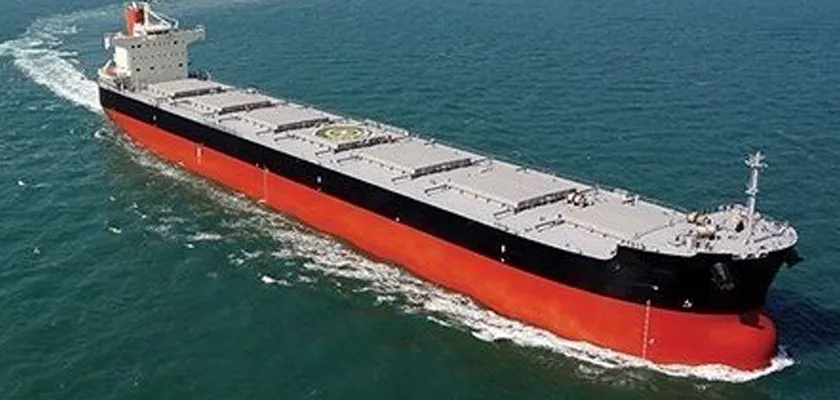
What are “Kamsarmax” vessels?
Kamsarmax vessels are bulk carriers that can carry between 80,000 to 85,000 tons of cargo and are designed to fit into the Kamsar port in Guinea, West Africa. These types of vessels are slightly larger than traditional Panamax ships and represent the maximum size that can load bauxite (aluminum ore) at this important mining port. They are named after the Kamsar port that determines their size limitations.
Kamsarmax vessels were created specifically for the bauxite trade from Guinea, which produces about half of the world’s bauxite ore. The port of Kamsar has depth and infrastructure limitations that prevent larger ships from loading there, so vessels needed to be designed to maximize cargo within these specific port constraints.
What is special about “Kamsarmax” vessels?
Kamsarmax vessels are precisely engineered to carry the maximum possible bauxite cargo from Guinea’s Kamsar port while meeting the port’s draft and length restrictions. These types of vessels typically have seven cargo holds optimized for carrying heavy ore cargoes and feature reinforced hull structures to handle the weight and stress of dense mineral cargoes.
These ships often have fuel-efficient engines and hull designs that provide good performance when carrying heavy cargoes like bauxite and iron ore. They can also carry other bulk commodities when not engaged in the bauxite trade, providing operational flexibility for their owners. Many feature advanced cargo monitoring systems to ensure proper weight distribution.
What is the importance of “Kamsarmax” vessels today?
Kamsarmax vessels are crucial for the global aluminum industry by efficiently transporting bauxite from one of the world’s largest deposits in Guinea to aluminum refineries worldwide. These types of vessels enable cost-effective production of aluminum by providing optimized transportation from this key mining region.
Use Cases:
- Transporting bauxite from Guinea to aluminum refineries
- Carrying iron ore from West African mines
- Shipping other bulk commodities when not in bauxite trade
- Moving heavy mineral cargoes from depth-restricted ports
- Serving mining operations with port infrastructure limitations
- Supporting aluminum supply chains globally
Post Panamax Vessels
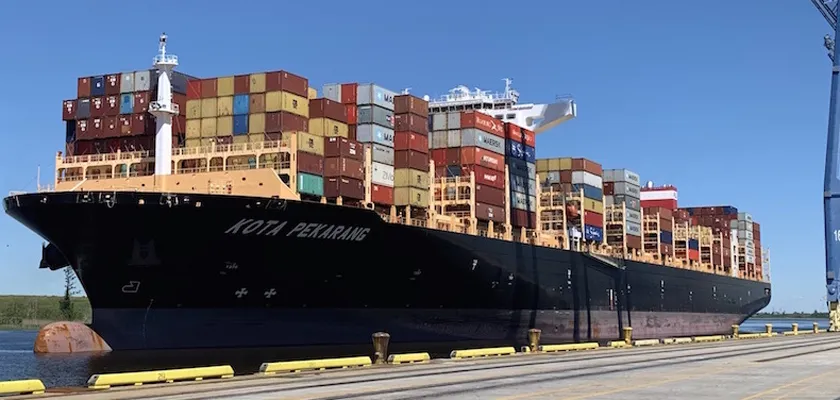
What are “Post Panamax” vessels?
Post Panamax vessels are ships that are too large to fit through the original Panama Canal locks but can use the newer, expanded canal locks that opened in 2016. These types of vessels typically carry between 85,000 to 120,000 tons of cargo and are wider, longer, or deeper than traditional Panamax ships. They can access the expanded Panama Canal but cannot use the original smaller locks.
Post Panamax vessels were created because shipping companies wanted larger cargo capacity than Panamax ships could provide while still maintaining access to the Panama Canal route. When Panama announced plans to expand the canal with bigger locks, shipbuilders designed vessels specifically to maximize cargo within the new larger dimensions.
What is special about “Post Panamax” vessels?
Post Panamax vessels represent a sweet spot between cargo capacity and canal access, offering significantly more cargo space than Panamax ships while still using the important Panama Canal route. These types of vessels can carry about 50% more cargo than traditional Panamax ships while maintaining access to both Atlantic and Pacific markets through the expanded canal locks.
These ships feature advanced hull designs and fuel-efficient engines that provide better economics per ton of cargo compared to smaller vessels. They often have larger, more powerful cargo cranes and can handle diverse bulk commodities. The expanded canal access gives them commercial advantages over larger ships that cannot use the Panama route and must sail around South America.
What is the importance of “Post Panamax” vessels today?
Post Panamax vessels provide optimal cargo capacity for trades that benefit from Panama Canal transit while offering better economies than smaller ships. These types of vessels are becoming increasingly important as shippers seek to maximize efficiency on key trade routes between Asia, the Americas, and Europe.
Use Cases:
- Transporting large grain shipments from North America to Asia
- Carrying coal exports through the expanded Panama Canal
- Moving iron ore between Atlantic and Pacific markets
- Shipping containers on transpacific and transatlantic routes
- Transporting bulk commodities requiring canal transit
- Serving high-volume trades where canal access provides route advantages
Capesize Vessels
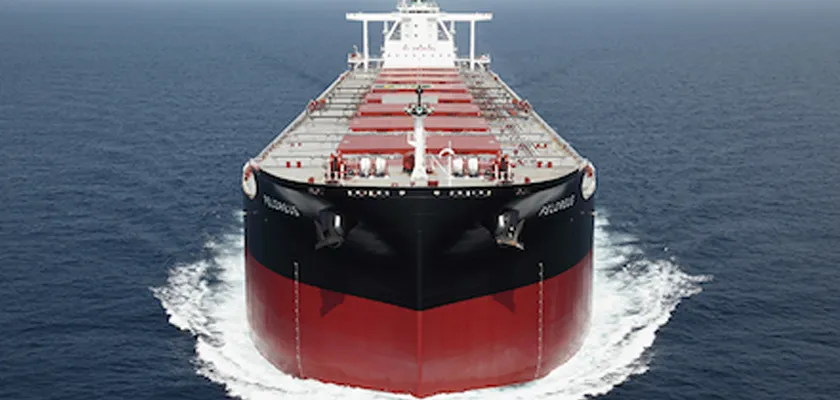
What are “Capesize” vessels?
Capesize vessels are massive bulk carriers that typically carry between 120,000 to 200,000 tons of cargo and are too large to fit through either the Panama or Suez Canals. These types of vessels must sail around the Cape of Good Hope at the southern tip of Africa or Cape Horn at the southern tip of South America to travel between oceans, which is how they got their name.
Capesize vessels were created to achieve maximum economies of scale in transporting bulk commodities like iron ore and coal over long distances. As global trade in raw materials grew, shipping companies needed the largest possible ships to reduce transportation costs per ton, even if it meant losing access to canal shortcuts.
What is special about “Capesize” vessels?
Capesize vessels are among the largest cargo ships in the world and can carry enough iron ore to supply a steel mill for several months. These types of vessels achieve tremendous economies of scale, with transportation costs per ton that are much lower than smaller ships. They are specifically designed for major bulk trades between large mining regions and industrial centers.
These ships have enormous cargo holds that can be over 900 feet long and have sophisticated loading and unloading systems designed for maximum efficiency at specialized bulk terminals. They require deep-water ports with specialized equipment and cannot access many smaller ports around the world. Most Capesize vessels are dedicated to specific trades like carrying iron ore from Brazil to China.
What is the importance of “Capesize” vessels today?
Capesize vessels are essential for global heavy industry by providing the most cost-effective transportation for massive volumes of iron ore, coal, and other bulk commodities. These types of vessels enable countries like China to import raw materials economically from distant suppliers, supporting global steel production and energy generation.
Use Cases:
- Transporting iron ore from Brazil and Australia to steel mills
- Carrying coal from major exporting countries to power plants
- Moving large volumes of grain between major agricultural regions
- Shipping bauxite from mines to aluminum refineries
- Transporting other bulk commodities on high-volume routes
- Supporting long-distance trades where canal access is not required
Valemax Vessels
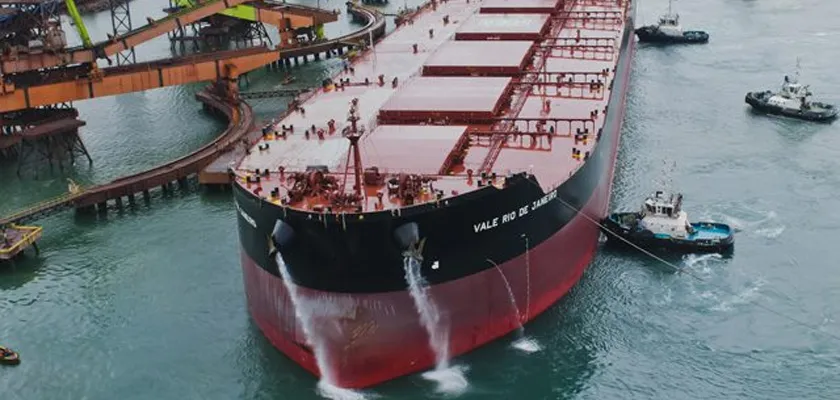
What are “Valemax” vessels?
Valemax vessels are the largest bulk carriers ever built, capable of carrying between 380,000 to 400,000 tons of iron ore in a single voyage. These types of vessels were specifically designed by Brazilian mining company Vale to transport iron ore from Brazil to China and other major steel-producing countries. They are nearly 1,200 feet long and represent the ultimate in bulk carrier size and efficiency.
Valemax vessels were created because Vale wanted to reduce the cost of shipping iron ore from Brazil to China, which became the world’s largest steel producer. By building the largest possible ships, Vale could achieve unprecedented economies of scale and compete more effectively with closer iron ore suppliers like Australia.
What is special about “Valemax” vessels?
Valemax vessels can carry twice as much cargo as traditional Capesize ships and are so large that many ports cannot accommodate them. These types of vessels are essentially floating iron ore mountains that can supply major steel mills for months with a single delivery. They require specialized deep-water terminals with the most advanced cargo handling equipment in the world.
These ships represent the absolute limit of bulk carrier technology with reinforced hulls designed to handle enormous weights and sophisticated ballast systems to maintain stability. They can only operate between a handful of specially equipped ports and require tugboat assistance for maneuvering. Each vessel carries as much iron ore as would fill 13,000 large trucks.
What is the importance of “Valemax” vessels today?
Valemax vessels provide the most cost-effective transportation for iron ore over very long distances, enabling Brazilian miners to compete globally despite being far from major steel-producing regions. These types of vessels are crucial for maintaining competitive global iron ore supplies and supporting worldwide steel production.
Use Cases:
- Transporting iron ore from Brazil to Chinese steel mills
- Carrying massive iron ore shipments to major industrial centers
- Moving record-breaking cargo volumes on ultra-long routes
- Supporting large-scale steel production in Asia
- Providing most economical transportation for distant iron ore mines
- Serving specialized terminals designed for ultra-large bulk carriers
Learn Logistics with Alliance Shipping
At Alliance Shipping, we believe that knowledge empowers better decisions. That’s why we’ve launched a dedicated informational article series titled Learn Logistics with Alliance Shipping. This initiative is designed for everyone; an individual looking to understand the fundamentals or a business aiming to optimize shipping operations.
Through this series, we’ll explore the essential concepts of logistics and shipping, break down the different types of cargo and vessels, and share practical guides to help you navigate the complexities of global transportation. Our goal is to make sure you’re well-informed and confident when making logistics-related decisions, whether you’re shipping your first container or managing a global supply chain.
Stay tuned as we continue to explain the logistics industry, one topic at a time.
